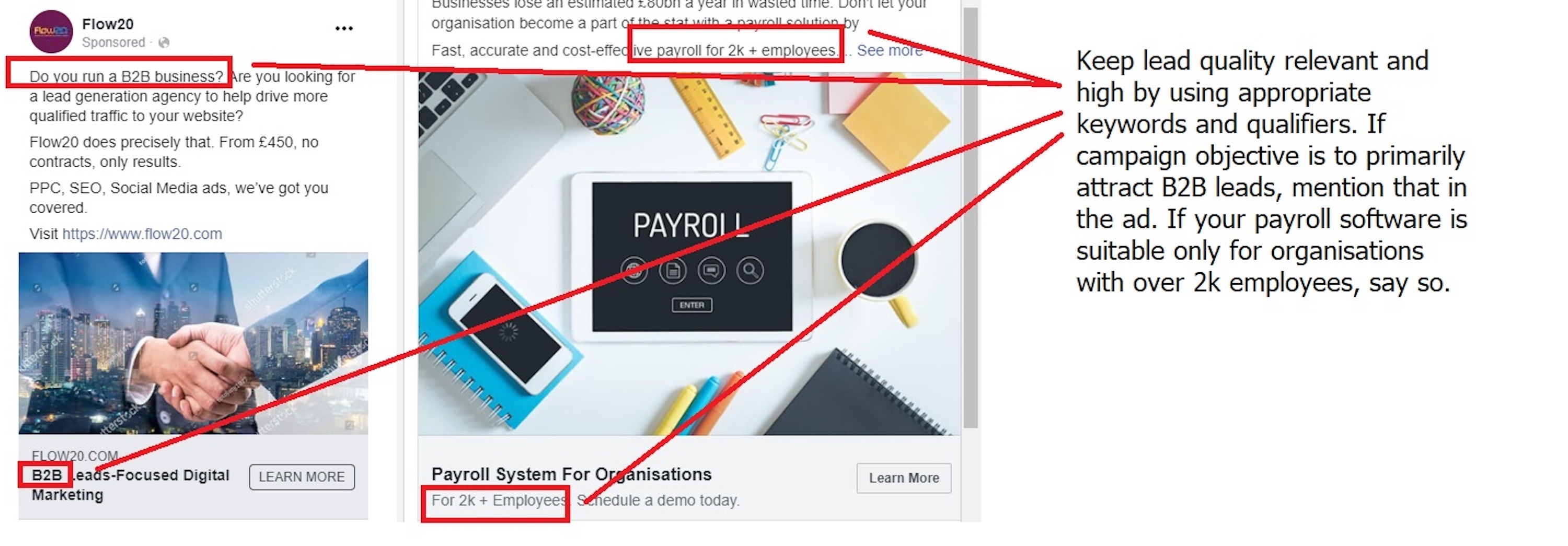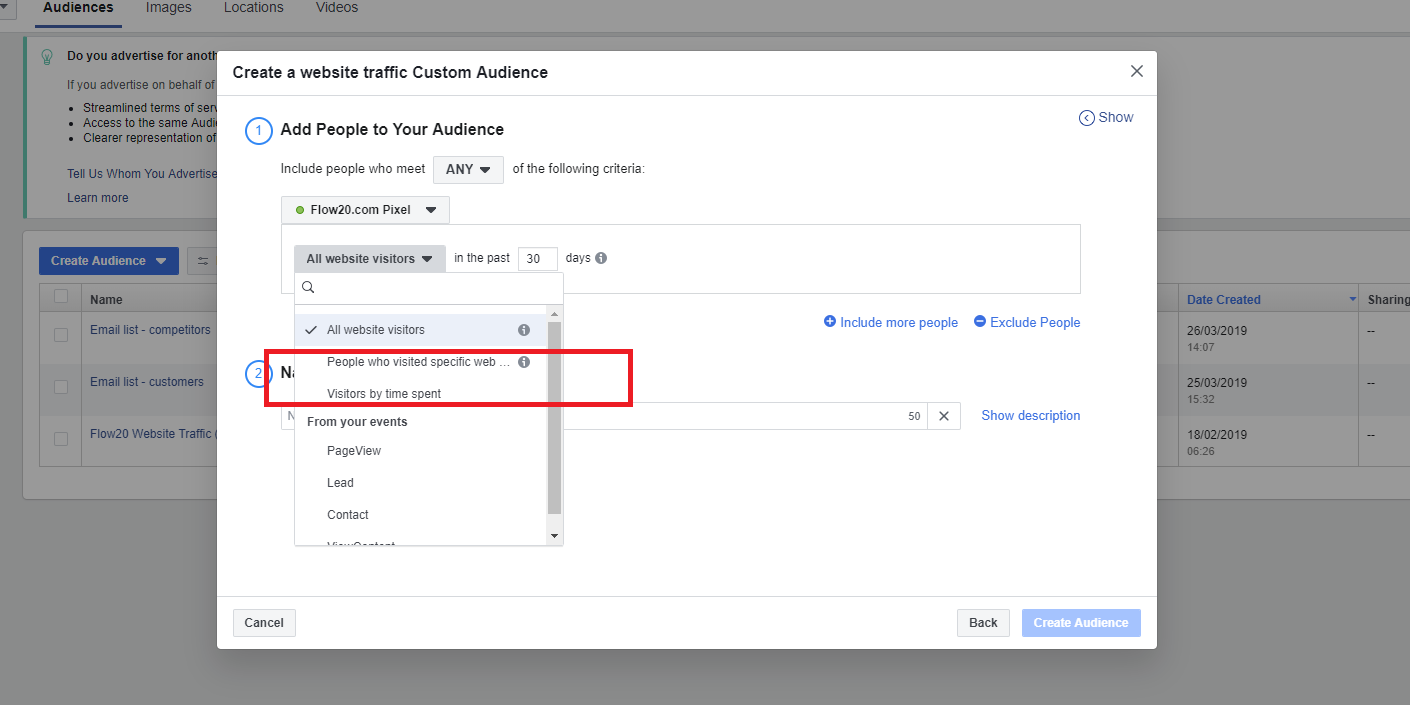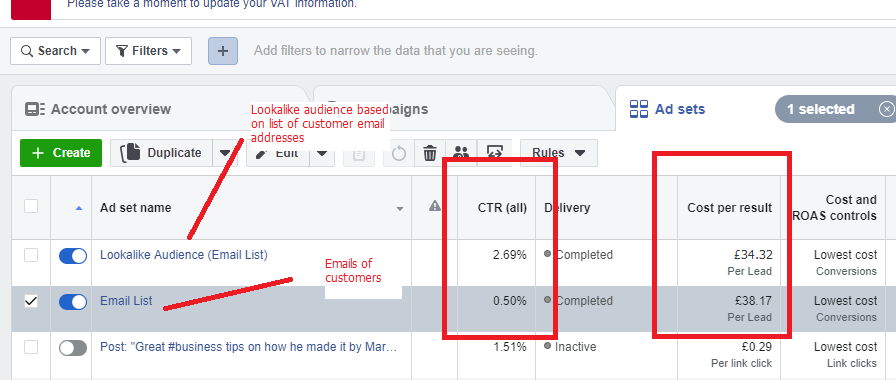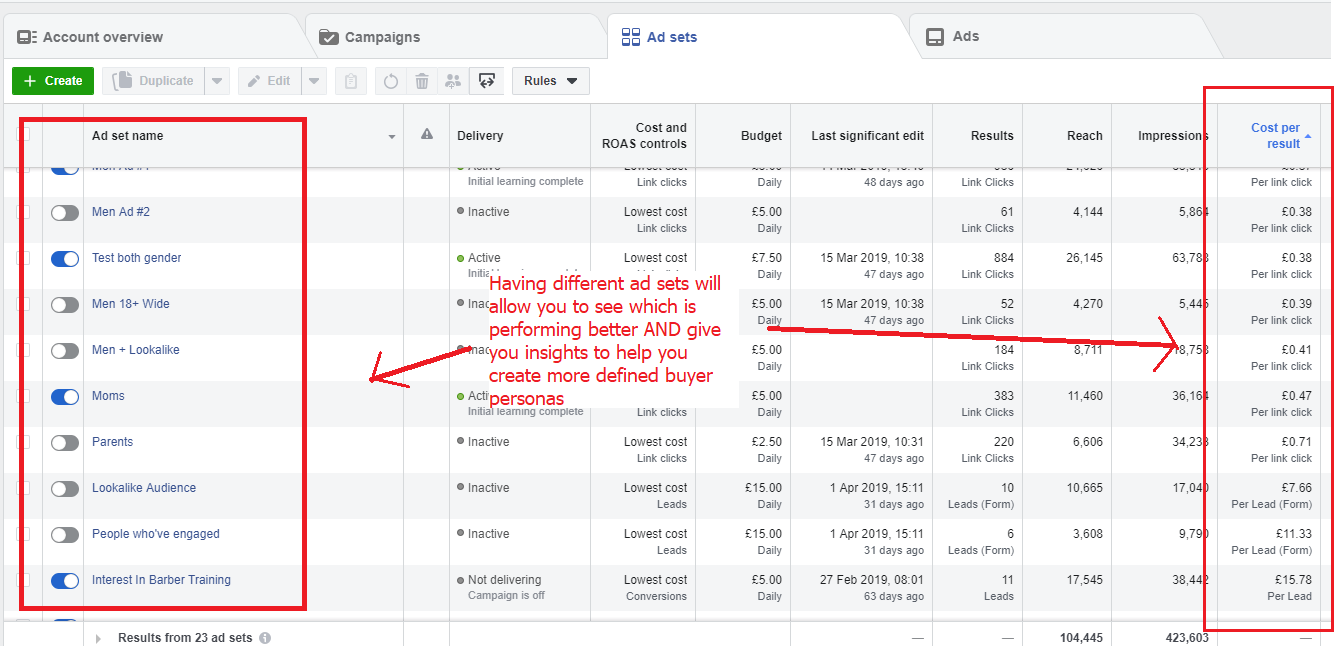Getting good quality leads from Facebook can be a hit and a miss.
Facebook ads can work extremely well for some industries and sectors such as health/fitness, restaurants, and fashion brands. For others, especially B2B, not so much. Not in the beginning, anyway.
If you have been running Facebook ads for a while and are even generating leads from it but finding that lead quality isn't great or that they are not quite converting at a similar conversion rate to your Google Ads, this guide is for you.
Below are some of the ways I was able to significantly increase the enquiry-to-signup conversion rate for a Facebook ads campaign and these techniques should work for you too; especially if you are running a B2B campaign, something that generally doesn't perform as well on Facebook.
Note: While I have only referenced Facebook here, all of the principles apply to Instagram as well.
1) Review the Messaging
Unlike Google Ads, where you have greater control of the quality and type of traffic coming through to your landing page by way of keywords, you don't have that option with Facebook.
Instead, to keep the traffic quality high and relevant, you have 2 main methods — the interests targeting and your ad copy.
Finding the right combination for targeting isn't an exact science and the only way to find what works for your campaign is to create lots of different audiences in separate ad sets so you can figure out which ones are performing the best.
The ad copy is where you can prevent low quality leads from coming through by making your product or service's value proposition clear. For example, say you are promoting enterprise payroll software, and your ideal customer is a medium to large organization with a minimum of 2K employees.
You can prevent leads from small business owners, single person operations and freelancers with an ad that clearly mentions something along the lines of "Suitable for companies with 2K+ employees".
 Include relevant qualifier text on your ads to keep Facebook lead quality high
Include relevant qualifier text on your ads to keep Facebook lead quality high
In fact, many users may not even read the ad copy so you could experiment with having an annotated version of the image with the text to make sure it isn't missed.
Similarly, think about what expectations your potential customers have with an offering like yours and whether there is anything that you need to educate them about before they make an enquiry.
For example, if free trials are common-place with payroll software (and, they are) and you don't offer one, it is best to say that in your messaging, implicitly or explicitly to keep lead quality high.
2) Evaluate Where Your Offer Sits Within The Marketing Funnel
Depending on who you ask, marketing funnels come in all sizes and shapes. Some will say there are only 4 stages, your classic A.I.D.A model (Attention, Interest, Desire, and Action), while others conform to a more detailed plan with some additional stages thrown in.
Regardless of which one you use as a framework for your marketing strategy, any marketing strategy or offer will fall into one of those typical customer life-cycles. And, the personality and disposition of the traffic quality at those various stages will vary.
Expanding on our example above, users who are just starting to search for` payroll software are more likely to spend time reading a blog post on the subject (especially ones which offer buying help), or they could be registering for a webinar or downloading a whitepaper.
 The different stages of the marketing funnels and which techniques work best at each stage
The different stages of the marketing funnels and which techniques work best at each stage
Users who are further down the funnel that may have decided to have a new large-scale payroll software implemented may engage with more sales-oriented content such as downloading a brochure while users who are nearing the bottom of the funnel, i.e., ready to buy, may go ahead and book a demo.
How well your offer correlates to the various stages of your typical buying journey will have a big impact on your Facebook ad's lead quality, so you want to make sure you take that into account when creating your ads and offers.
For low-involvement decisions, such as someone looking for a simple solution such as Quickbooks, they may just go ahead and sign up for a free trial as the initial commitment is low and the cost to change vendor is almost zero.
However, if someone is responsible for exploring a new payroll system for a 1000+ employee firm and the cost to change is significant, they will most likely want to find out a lot more about the product (white papers, case studies, webinars) especially if they haven't heard of the brand before. After a few more contact points, they may opt to book a demo or on-site visit.
Again, using multiple ad copies allows you to test what is working better. If you are not already, consider having separate ad campaigns with different offers designed to address pain points and needs along the different stages of the funnel. There is a good chance you will find some funnel stage "sweet spots" where you are getting the highest quality of traffic and leads.
3) Make Full Use of the Audiences
Facebook's audience related features are really where it comes into its own, and you want to use it to its full capabilities to help improve your lead quality.
Here are some ways to do that:
A) Find New Leads Based on Your Most Engaged Users
Create a custom audience that comprises your website visitors who have visited specific pages that demonstrate a higher level of buy-intent.
To do this, you first have to have the Facebook pixel setup on your website. Here is a video to explain how to set it up or head over to this link to see written instructions on setting this up via your Business Manager.
Important Pages to Track Once Your Pixel is Setup
If you are a service-based business, this would typically be your price/package page(s) and maybe your contact page (although the contact page isn't a buy-intent page per se, most people looking for a typical service will choose a local business where possible and will typically visit the contact page when converting).
If you are an Ecommerce business, this could be people who visited certain products or even better, viewed the cart page (i.e., added items to cart) but didn't convert.
While setting up a custom audience, you can also do so based on the amount of time spent, and I recommend you set up a separate audience for those users so later you can compare the performance of the 2.
 Creating custom audiences on Facebook.
Creating custom audiences on Facebook.
 Don't go any more than 1% when creating your lookalike audiences.
Don't go any more than 1% when creating your lookalike audiences.
Once you have your custom audiences created, you can create a Lookalike audience based off of it.
Essentially, you are putting Facebook's amazing computing power as well as the incredible level of data it has on us to find new customers (your new Lookalike audience), just like the ones you selected. In fact, what is incredible is that sometimes, Facebook's lookalike audience may actually outperform your very own, real customer data!
 Lookalike audience performing better than own data.
Lookalike audience performing better than own data.
When you are creating your Lookalike audience, Facebook will ask you to choose a % between 1 - 10 with 1 being that your Lookalike is the closest to the target data while 10 is the loosest.
Unless what you are offering is very unique, I suggest you always go with 1% as there is a good chance Facebook will still find you enough new customers to target. Beyond 3% the similarity of your Lookalike can begin looking nothing like your target data, which will somewhat negate the whole purpose of this exercise!
And, that is pretty much it!
You can now launch new ad campaigns to target your newly created Lookalike audience(s), and because they are similar to past prospects who were engaged, you should see higher quality of leads coming through from this way of targeting.
B) Finding New Leads Based on Your Past Leads
If you have a list of emails from your past customers, you just need to follow the exact steps above to find new prospects that match your current customer base's profile.
When setting up the custom audience, you will need to select the 'Customer file' option and then depending on whether you have Lifetime Values (LTV) data attached to your customer base, option 1 or 2.
 Create a custom audience based on email addresses
Create a custom audience based on email addresses
Sidenote: you can also import your email lists directly from Mail Chimp.
Conclusion
And, there we have it. 3 ways for you to increase the quality of your leads from Facebook ads.
Just as with Google Ads or Microsoft Advertising (yep, that is what Bing ads is called now) testing everything is key.
Interest targeting in ads on Facebook is what keywords are for Google Ads, so I recommend you create several small ad sets for each relevant interest 'combination' you have created. That will allow you to easily evaluate not just which ads are performing better but also what types of interests/demographic of your users are most engaged — this data includes powerful insights you can incorporate into your other forms of marketing.
 Have different ad sets for each audience
Have different ad sets for each audience
If you have tried something else that worked for you or have a tip of your own, I would love to hear it.
